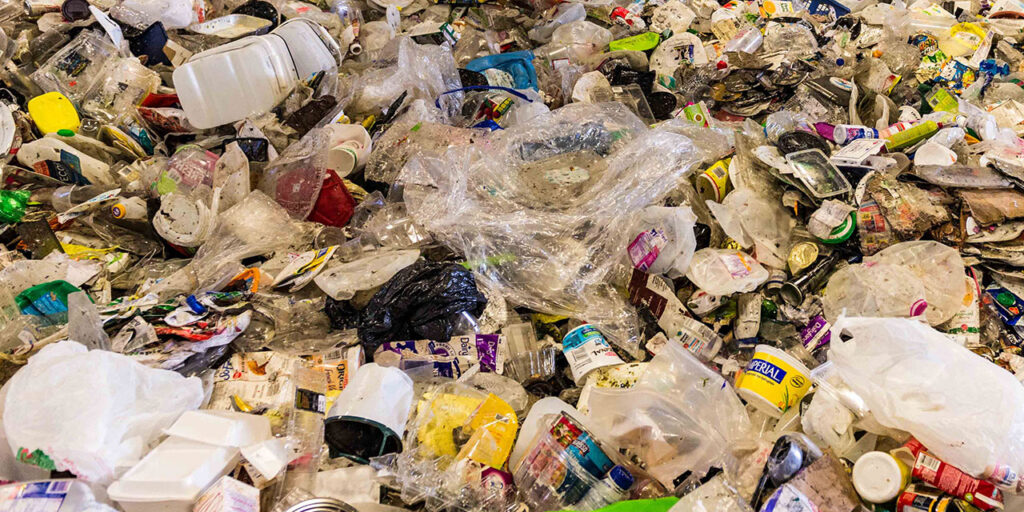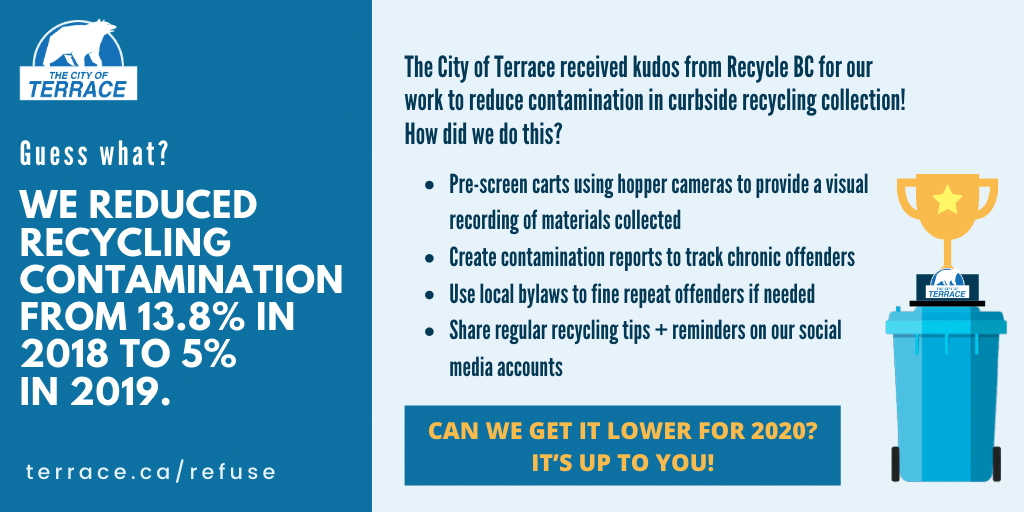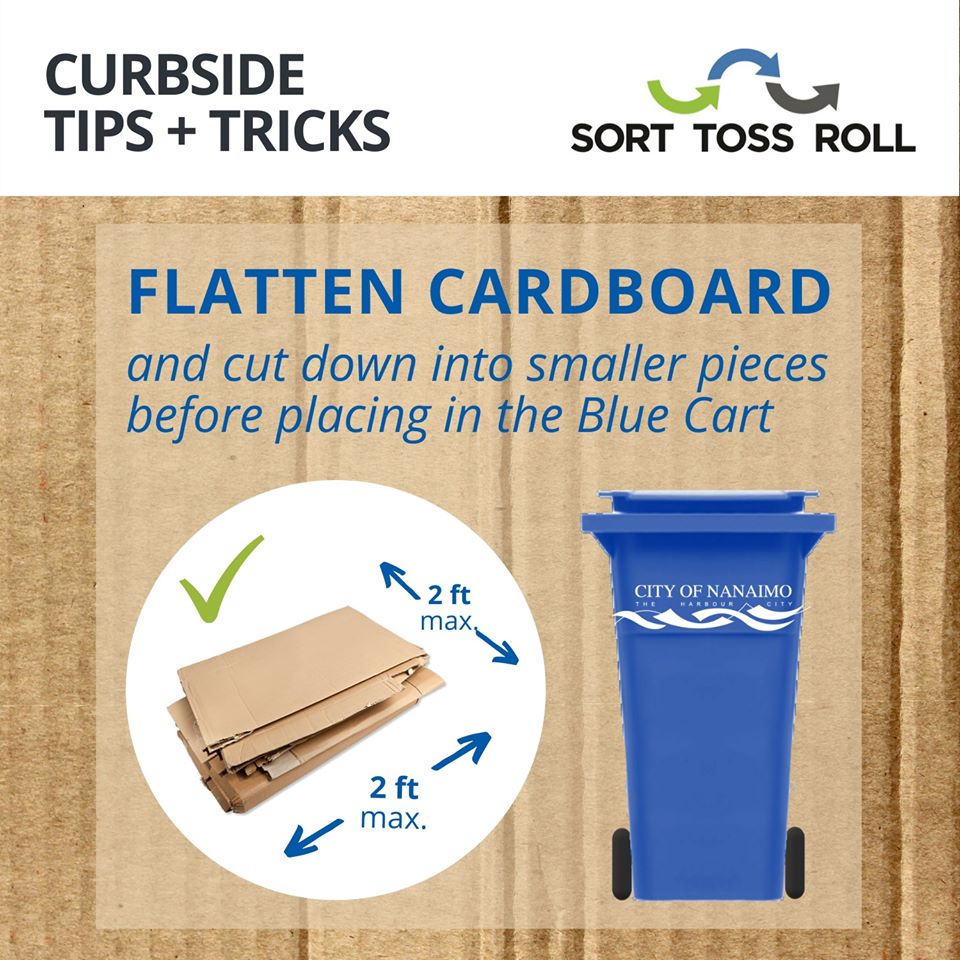Contamination is a major obstacle in the recycling process. It occurs when material that is not accepted for recycling is put in recycling bins. There are many examples of contamination and they include:
- Material not accepted by Recycle BC
- Material that is not packaging or paper
- Material that can’t be recycled with current recycling technology
- Hazardous material, including batteries, propane or butane cylinders, needles, lighters
- Containers with contents (e.g. food or liquid) inside
- Material sorted incorrectly
- Material tied in a plastic bag
Why Preventing Contamination is Important
When it comes to recycling, we’re all in this together. From everyone here at Recycle BC, to the dedicated collection and post-collection crews, to you – the residents of BC – we all work together to ensure the success of the recycling system. In our 2019 Annual Report, we were happy to report that 90% of collected tonnes in the Recycle BC program were managed by recycling. Low contamination is a contributing factor to a high recycling rate.
Collector Spotlight: City of Terrace
The City of Terrace is a great example of everyone – residents and collectors – pitching in to successfully reduce contamination. In 2018, curbside recycling contamination was nearly 14% in Terrace but after education campaigns, deeper visual screening by drivers during pick-up, and stricter enforcement of bylaw, Terrace reduced their curbside contamination level to 5%.
(credit: City of Terrace, Twitter)
Easy Ways to Prevent Contamination
1. Rinse your containers as soon as they’re empty. Put a little warm water and soap inside and then put the lid back on to shake it up and loosen anything that’s stuck. Watch our rinsing video so you can see how clean is clean.
2. Sort your material. If you don’t have room for your recycling bins/bags inside, keep re-usable shopping bags or smaller bins to sort your material according to how your recycling is collected from your home (paper, containers and possibly glass) and depot-only materials – so it’s an easy transfer to the curb on collection day.
3. Check the Recycle BC material list to see what is accepted and how to sort it. You can download our app or find our material list at RecycleBC.ca/Materials.
4. Follow your local recycling guidelines. In some areas of BC, Recycle BC manages recycling collection and the guidelines can be found in the recycling guides available on our website. In areas where the local government manages recycling, it’s best to check their website and follow their social media for any messaging specific to where you live. For example, this recent Facebook post by the City of Nanaimo addresses cardboard contamination in their blue carts given a recent increase in cardboard due to more home deliveries during the pandemic.
(credit: City of Nanaimo, Facebook)
Together, we’re doing a good job reducing contamination, but there is still significant room for improvement. Follow the easy steps above and connect with us on social for recycling info to support BC’s residential packaging and paper recycling efforts. Great job, BC!
Follow Recycle BC on Facebook, Twitter, and Instagram for recycling tips and reminders!




